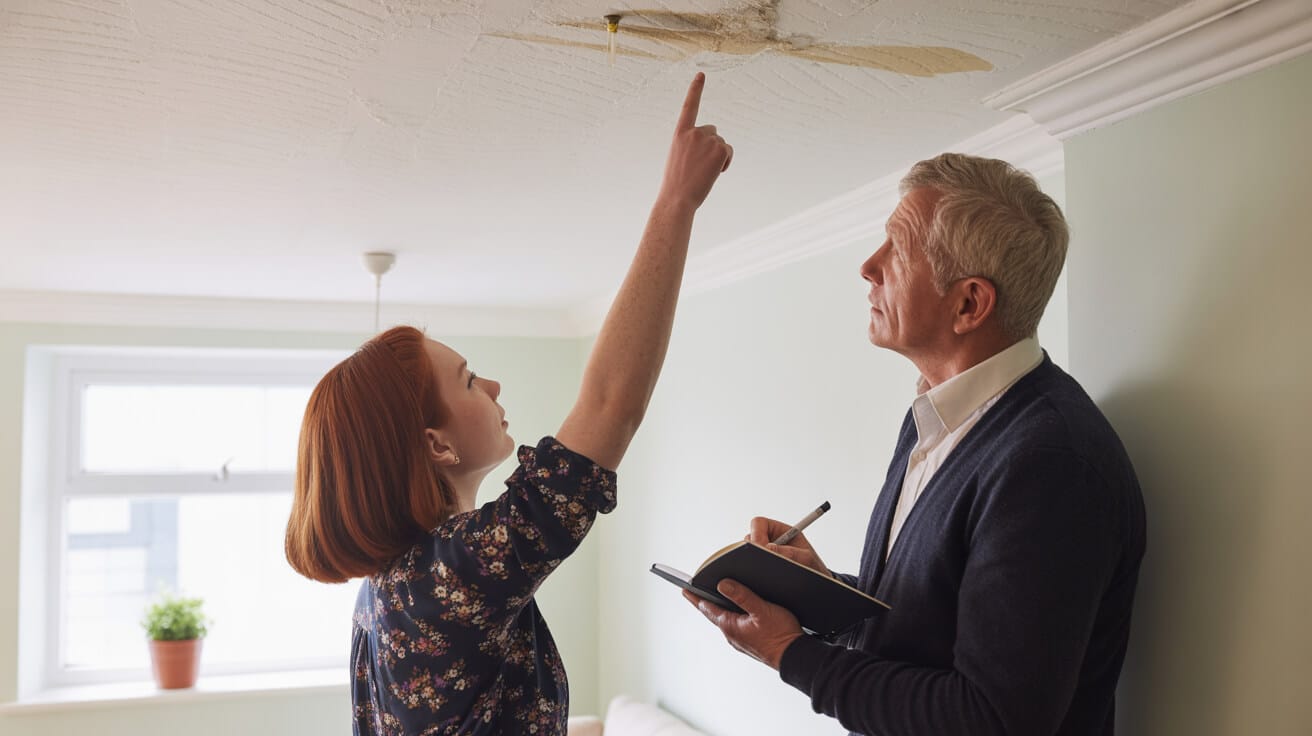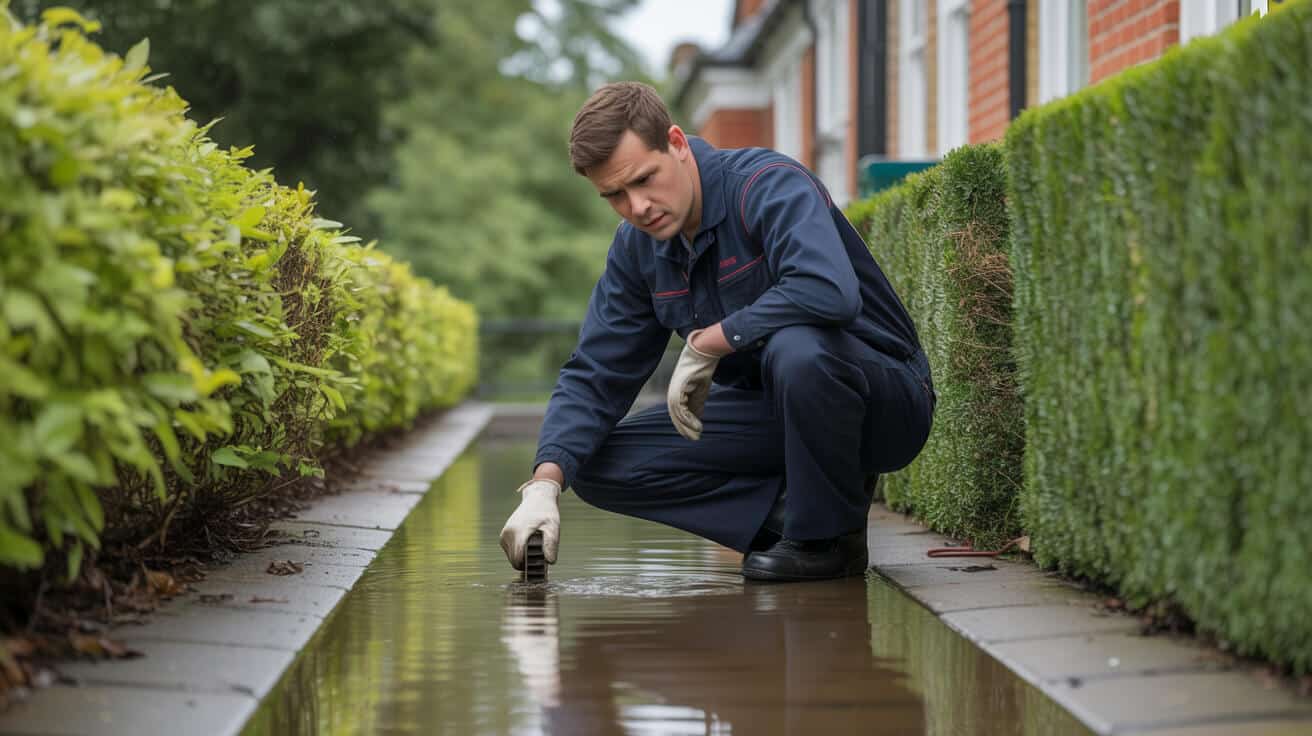 What Qualifies as a Plumbing Emergency in The Uk
What Qualifies as a Plumbing Emergency in The Uk
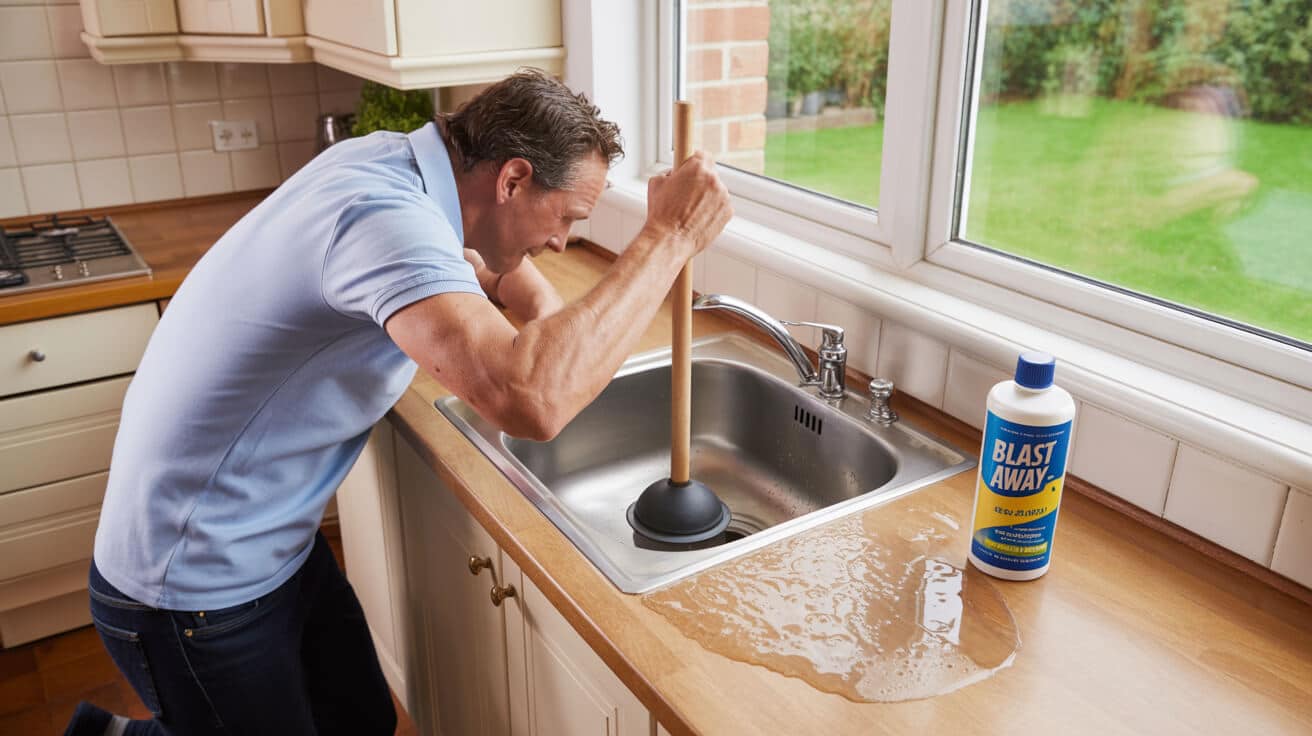
What’s an Actual Plumbing Emergency in the UK—And Why Does It Matter for Stakeholders Like You?
Emergencies aren’t defined by minor inconvenience or mess—they’re the moments that can rip through your property, business, or reputation overnight. For UK homeowners, landlords, letting agents, managing agents, commercial property owners, and local authorities, knowing exactly what truly qualifies as a plumbing emergency determines whether you stop a disaster or end up facing legal, financial, and even reputational fallout.
You might not see it coming, but a plumbing emergency doesn’t give you time to second-guess. Only decisive action limits the damage.
A plumbing emergency in the UK means a situation that puts health, safety, building integrity, or legal compliance at immediate risk. The key isn’t how “big” the leak looks or how much it annoys you—it’s whether rapid action is required to protect people, property, or ongoing business.
Statutes like the Landlord and Tenant Act 1985 (Section 11), the Homes (Fitness for Human Habitation) Act 2018 and the Housing Health and Safety Rating System (HHSRS) set practical thresholds:
- Immediate threat to property safety or habitability
- Any sanitation failure or loss of water, heating or drainage
- Situations where legal standards of health, hygiene or compliance are breached
- Exhibit clear risk of significant further damage if left unresolved, such as flooding, electrical risk, or structural deterioration
A burst pipe, a home with no usable toilets, or an overflowing drain isn’t just “urgent”—it’s an emergency with legal timelines and insurance implications. Whether you’re managing flats, running a care home, or protecting your family in a semi, getting this distinction right shapes not just how you respond, but also whether insurers, councils, or clients see you as a responsible custodian or a walking liability.
How Do UK Laws and Industry Standards Actually Define a Plumbing Emergency?
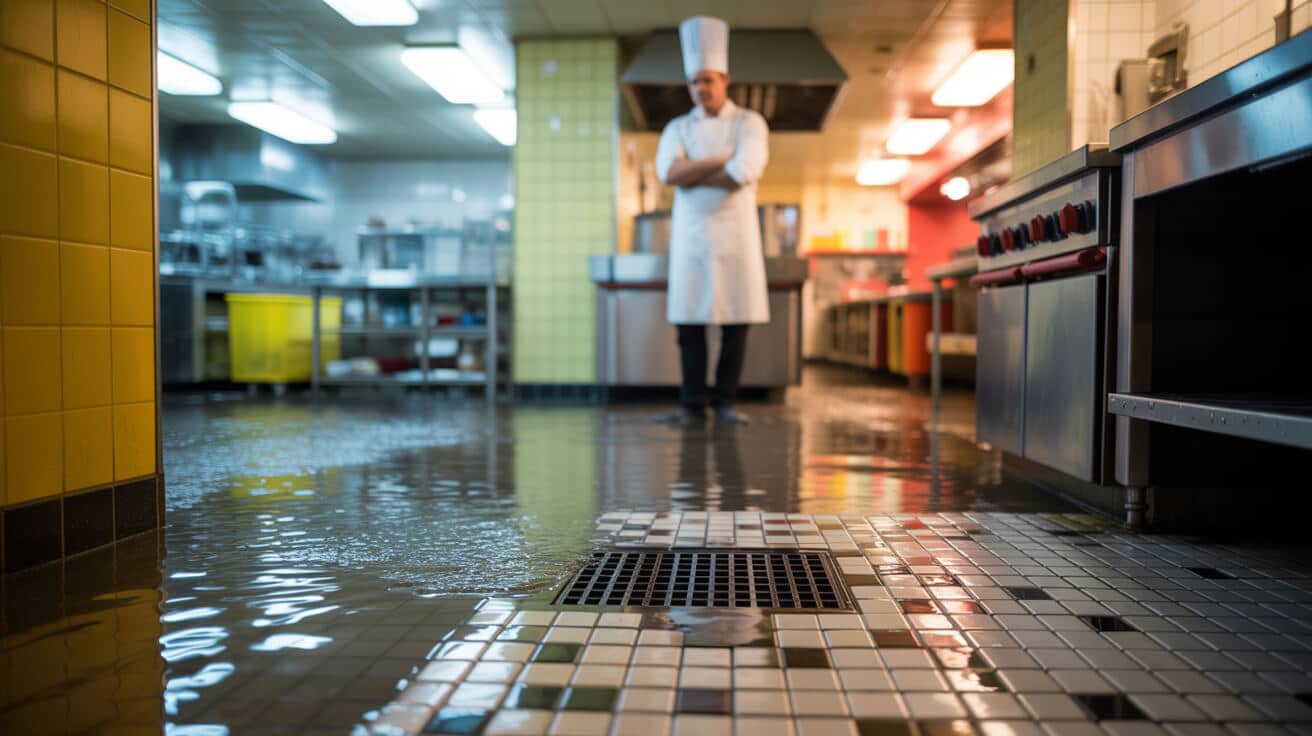
The law is clear: not every mishap is an emergency, but some demand a response that cannot wait. According to UK government guidance (gov.uk/private-renting/repairs), “emergency repairs” refer to issues threatening health, safety, or making a property unfit for living—issues that significantly impair water supply, heating, sanitation, or security.
Key examples the law and industry accept as true plumbing emergencies:
- Burst pipes or uncontrolled leaks: Water escaping rapidly, threatening structural damage, electrics, or causing flooding.
- Total loss of water: No potable supply, not due to wider utility works.
- Complete failure of hot water or heating: Particularly severe for elderly, infants, or ill residents—especially in winter.
- Overflowing or non-functional toilets, drains, or sewers: Creates hygiene and health threats, and renders essentials unusable.
- Suspected gas leaks or carbon monoxide alarms: Requires immediate evacuation and specialist emergency attendance.
What doesn’t qualify? A dripping tap, single slow radiator, or cosmetic damp. The litmus is direct risk—either to health, safety, property, or ongoing habitability.
Landlords, business managers, property agents, and local authorities must act swiftly—typically within 24 hours—in clear emergencies or risk failing regulatory duties, opening up to loss of rent, fines, or court action.
Every hour that passes in a true emergency magnifies potential damage, cost, and legal exposure. Delay can void insurance, lose tenants, and endanger safety.
Homeowners are similarly advised to act immediately—not just for peace of mind, but often because insurers specifically require prompt mitigation to validate claims (Aviva Newsroom 2022).
Why Burst Pipes, Rapid Leaks, and Water on Electrics Always Require Immediate Response
Plumbing emergencies become catastrophic in minutes, not hours. One failed pipe joint or dislodged push-fit can unleash hundreds of litres, compromising floors, walls, ceilings, and electrical wiring.
Situations demanding “drop everything” action:
- Water is pouring, not dripping, and can’t be contained by towels or buckets.
- Main stopcock fails, isn’t accessible, or doesn’t halt the flow.
- Leak is near electrical outlets, fuse boards, or circuits—posing electrocution/fire risks.
- Water damage is spreading across rooms, between flats, or through structural timber.
As little as 30 minutes of uncontrolled water can necessitate thousands in repairs—especially if electrical systems are compromised or soaked structures foster mould.
Here’s the right sequence for anyone, whether homeowner, agent, or property manager:
- Assess safety: Don’t approach standing water near sockets or if floor feels unstable.
- If safe, turn off water at the main stopcock—usually under the kitchen sink, stairs, or utility cupboard.
- If water doesn’t stop, or you’re unsure, call an emergency plumber immediately.
- Photograph all visible damage—this is proof for insurance and future accountability.
- If there’s ANY sign of electrics being wet, switch off power at the consumer unit and seek professional help before re-entry.
Landlords and managing agents: Failing to act with this urgency can breach duty of care, void insurance, and risk tenant claims. Homeowners—slow response often results in uninsured losses.
A burst pipe can leak more than 400 litres an hour—enough to fill a bath twice in 60 minutes. *(WaterSafe, 2023)*
When Is Loss of Water, Heating, or Hot Water Legally an Emergency? Differentiating Nuisance From Genuine Risk
It’s easy to flag every malfunction as “urgent,” but the law—and best practice—draw a harder line.
Losses that are emergencies:
- Zero water at all outlets (within your property boundaries) and neighbours unaffected:
- Complete loss of hot water or heating: (not due to local authority or utility works) during cold weather or where risk groups (children, elderly, ill) are present
- Heating/hot water loss in premises that must provide it: Includes all rented, care, hospitality, and education properties
Not emergencies:
- Slow-filling cistern
- One tap malfunctioning but other facilities available
- Tepid, but still present, hot water
Quick test: Would you be putting tenant health, building insurance, or regulatory compliance at risk by waiting days? If yes, it’s an emergency.
Practical steps for property stakeholders:
- Verify with neighbours or water company that outage isn’t a street-level/main supply issue.
- Log the time, date, and action taken—this protects you legally and evidences due diligence.
- Call in WRAS/Gas Safe/appropriately certified professionals for documentation and swift fix.
For businesses, schools and care homes, the “emergency” bar can be even lower—loss of heating or water supply can trigger prompt environmental health intervention and force tenants to close or rehouse beneficiaries.
The fitness for human habitation Act strengthens tenants’ power to demand urgent repairs whenever hot water, sanitation, or heating is lost ([Shelter UK](https://england.shelter.org.uk/housing_advice/repairs/urgent_repairs)).
Which Sanitation and Drainage Failures Are True Plumbing Emergencies—and Who’s on the Hook?
Sanitation breakdowns punch well above their weight when it comes to legal and reputational risk. Overflowing or blocked toilets, non-draining baths, or visible sewage are the scenarios councils and insurers treat as emergencies—both due to health risk and the threat to occupancy rights.
Recognised emergencies:
- All toilets unusable or overflowing and no reasonable/compliant alternative on site
- Internal backflow of sewage into rooms, bathrooms, kitchen, or workspace
- External drains blocked and flooding immediately at doorways, communal areas, or public pathways
Even if the visible issue is just an outside drain, public health rules require immediate remediation to prevent exposure, odour nuisance, or broader hygiene threat.
Agent, landlord, or manager response pathway:
- Cordoning off affected areas if possible
- Photographic/video evidence—especially if third parties (council, insurers, environmental health) will be involved
- Direct action—either by emergency contractor or, where tenant refuses access, documented notice and escalation to local authority
Do not attempt to clear major sewage or flood events unaided—specialist skills and PPE (personal protective equipment) are required. If tenant behaviour is responsible, landlords must still mitigate first, then pursue remedies after.
Delaying on sanitation issues isn’t just a repair risk—it’s a potential closure order, legal action for exposing users to unsanitary conditions, and loss of tenancies or business continuity.
Gas Leaks, Boiler Failures, and CO: The “Zero Room For Hesitation” Class of Emergency
Some emergencies obliterate property concerns in favour of outright life safety. Gas and Carbon Monoxide (CO) issues are top of the hierarchy.
What counts as an emergency:
- The smell of gas anywhere indoors, or an alarm from a CO detector
- Boiler failure resulting in no heat, especially for vulnerable groups
- Gas appliance malfunction detected by smart/remote diagnostics
- Sudden, unexplained pressure loss or erratic boiler lock-out that standard resets don’t clear
If you smell gas or your CO alarm activates:
- Evacuate the property immediately.:
- Shut off the gas at the main valve ONLY if safe to do so.:
- Call the National Gas Emergency Service: 0800 111 999:
- Do not use electrical switches or create sparks.
For all boiler issues, only Gas Safe-registered professionals should investigate. In multi-unit, care, or commercial premises, the absence of heat can be classed as a “category one” repair, carrying legal deadlines for intervention.
Landlords and property managers: Always keep a log of Gas Safe certificates and engineer visits. Reports must be given to tenants and may be requested by local authorities at any time.
When in doubt, prioritise evacuation and professional help over attempts to diagnose or fix gas or boiler issues yourself.
Who Bears Legal and Practical Duty—And How Fast Must You Respond?
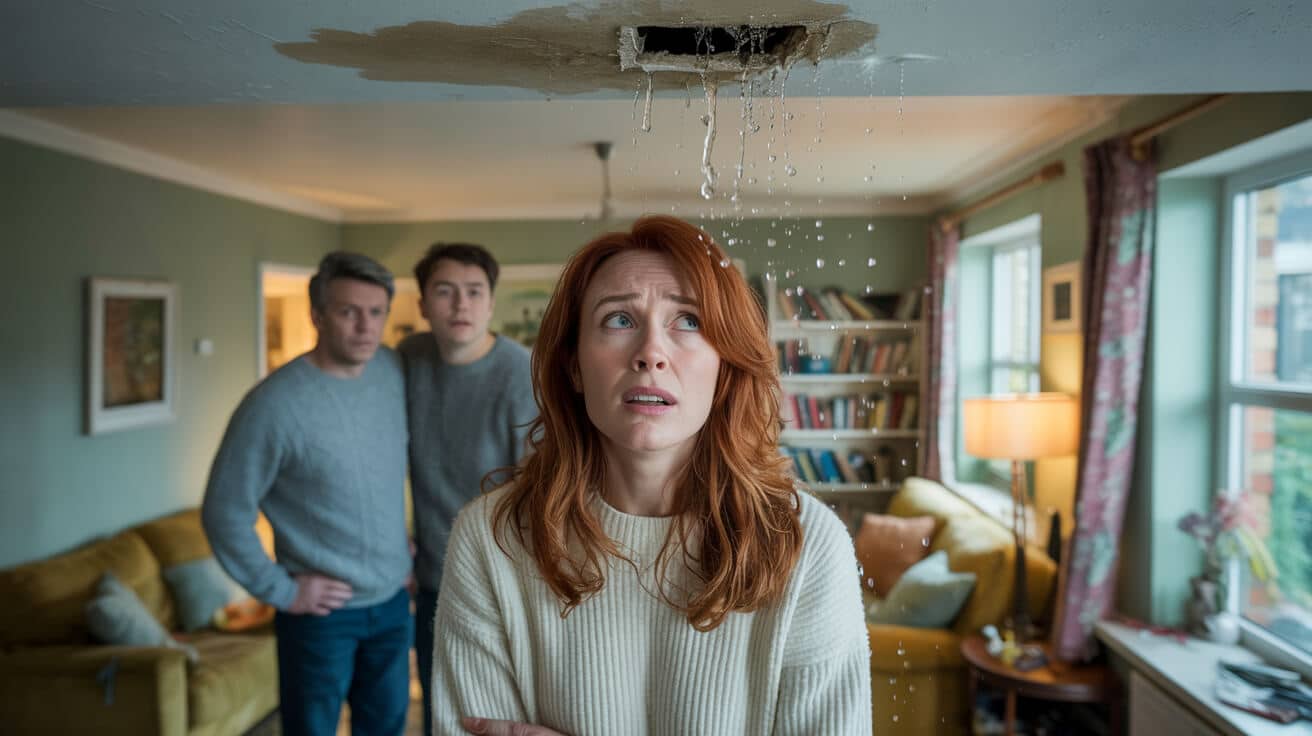
Depending on your role, the “act now” clock ticks at different speeds, but the expectation of demonstrable, timely action is universal.
Landlords and Agents
- Legally obliged to repair emergency water, heating, sanitation, or gas issues usually within 24 hours—sooner for severe cases, e.g., tenant without toilet or safe water (Section 11 Landlord and Tenant Act 1985; HHSRS; [gov.uk/repairs](https://www.gov.uk/private-renting/repairs)).
- Must document: all notifications received, attempted responses, and engineer visits/job sheets.
- Agents must keep a “crisis logbook” and share job evidence with landlords and, if needed, councils.
Homeowners
- Responsible for acting “without undue delay” in emergencies to preserve property and insurer confidence.
- Delays or half-measures often invalidate claims ([Aviva, 2022](https://www.aviva.com/newsroom/news-releases/2022/01/leaking-pipes-insurance-tips/)).
- Document ALL actions and communication.
Business and Facility Managers
- Health and Safety at Work Act and environmental health authorities set tight windows—same day, sometimes within hours for issues that threaten workspace fitness or staff safety.
- Delay = potential fines, forced closure, and loss of business continuity.
Tenants
- Obliged to promptly notify landlord/agent of emergencies, maintain proof of all communication, and may arrange repairs and recover costs if there is landlord inaction (within process).
For public sector and care homes: Regulatory scrutiny is highest; emergency action must be nearly instantaneous, and inspection/audit logs are required.
What Happens If You Delay? Compounding Risks for Property, Business and Reputation

Every hour lost in a real emergency adds layers of pain:
- Structural damage escalates: Water, for example, can rot floors, joists, electrical wiring—sometimes irreversibly—within hours, let alone days.
- Insurers push back: Policies often state failures to “take reasonable steps to prevent further damage” are excluded from payout.
- Legal liability lands: Tenants, leaseholders, or business customers can claim for disruption, secondary property loss, or injury, and councils may fine, repair at your cost, or even force closure or rehousing.
- Damage to reputation: One unsolved emergency can see you listed as “rogue landlord” or “non-compliant managing agent” on public registers; business clients can leave in droves.
What you control is speed and documentation—procrastination is a cost multiplier in emergencies.
Even for single homes, a poorly managed emergency can wipe out years of insurance savings or see you with unlet properties, complaints, or social media reputational hits.
What Should You Do When a Plumbing Emergency Hits? The Step-By-Step Crisis Flow
Emergencies strip away excuses and niceties. Here’s the minimum viable action plan:
1. Make Safe—Isolate the danger
If possible (and safe), shut off the inside stopcock or gas valve. Don’t approach water near electrics, or act if unsure. Depart the zone if there’s gas, CO alarm, or structural risk.
2. Record the Details
- Photograph damage, leaks, pooling water, “not working” appliances—timestamped photos matter for claims.
- Write down the moment you noticed the problem and any actions you took.
3. Notify the Right People—Now
- Contact your agent, landlord, manager, or workplace compliance lead immediately—text, email, call.
- If in business or public sector, log with main office, facilities, or responsible officer.
- For tenants: notify in writing as well as verbally.
4. Call the Certified Professional
- WRAS- or WaterSafe plumber for water/flood/leak.
- Gas Safe-registered engineer for heating, boiler or gas.
- Use only engineers with up-to-date certifications—a legal requirement for most insurance policies and for landlord/agent logs.
5. Compile and File All Evidence
- Save every job sheet, engineer certificate, before/after photo, and invoice in a central “crisis file.”
- For agents and managers: keep a running log with all action steps—this is your compliance proof if ever challenged.
Emergency Response Checklist
| Task | First Action | Who Handles |
|---|---|---|
| Isolate supply (water/gas) | Only if safe | Any occupant |
| Document damage | Photos & written log | First noticer |
| Notify & escalate | Call/email text | Occupier/tenant |
| Certified repair | Contact approved pro | Landlord/agent/homeowner |
| Log outcome | Store all evidence | All parties |
Acting with proof in hand—every photo, job sheet, communication—guarantees not only a successful repair and claim, but also shields you from accusations, billing disputes, or regulatory fines.
Plumbers 4U: Faster Than Panic, Smarter Than Guesswork—Emergency Help When Every Minute Counts
Plumbers 4U is built for this moment. Our national network means WRAS- and WaterSafe-certified engineers are always nearby, with G3 and Gas Safe specialists on-call. For homes, businesses, agents, and local authorities facing real consequences of delay, we deliver:
- Instant call triage: Guidance to make your site safe *immediately*, even before arrival.
- Full legal compliance: Engineer reports, photo proof, job sheets and time-stamps for every emergency—your insurance and client shield.
- Domestic & commercial coverage: From single homes through entire blocks, schools, hotels, and health care settings.
- No-miss aftercare: Digital records, warranty integration, and follow-up for every fix.
It’s not just water or gas at stake—it’s livelihoods, lives, and your reputation as someone who knows how to respond.
Whatever the hour, your solution is a single certified call away.
There’s No “Too Early” in Plumbing Emergencies. Secure Safety, Composure, and Confidence With Plumbers 4U
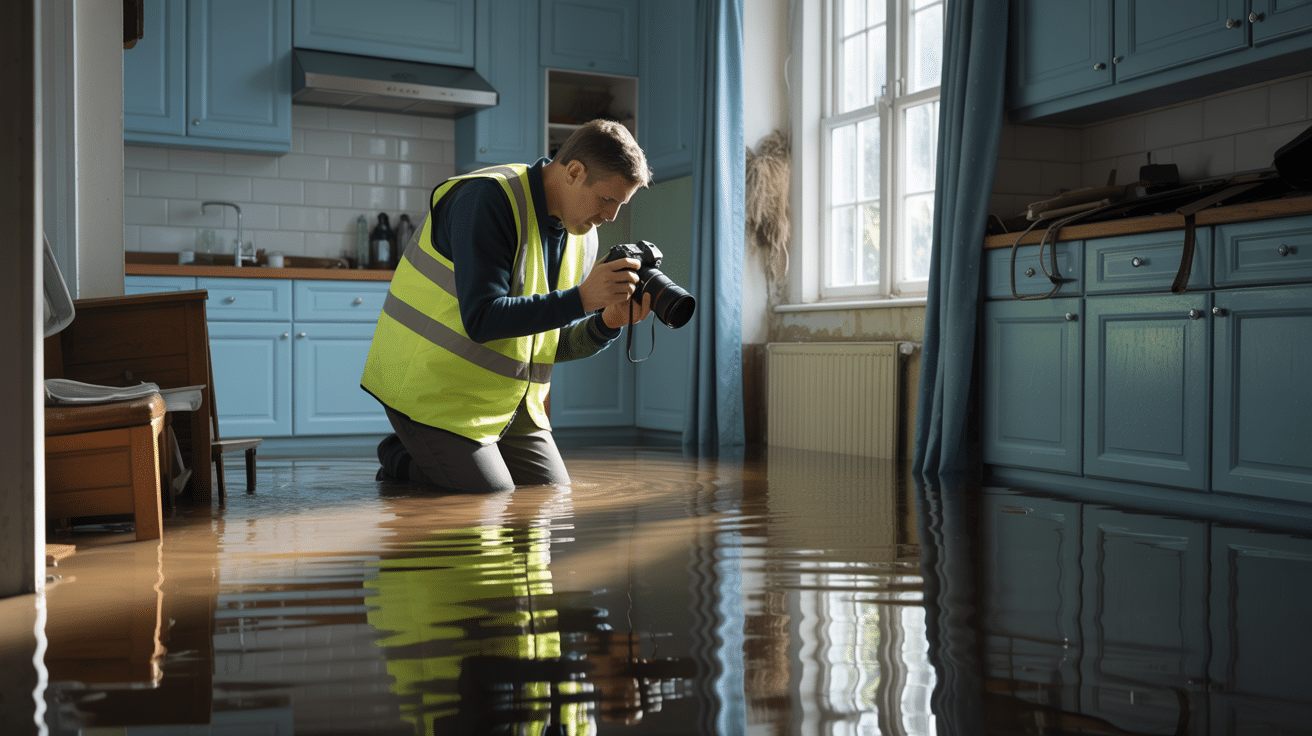
A proper emergency response means owning the moment—outpacing the damage, answering your legal obligations, and protecting everyone with the kind of proof that silences doubt and reassures insurers. That’s not just “service”—it’s the safety net your people, tenants, or users expect.
The cost of waiting is real, but authority and peace of mind are one call away.
Contact Plumbers 4U now for rapid, certified emergency help across the UK. Invest in professional response, airtight documentation, and the knowledge that your home, business, or property portfolio is safer in hands built for moments like this.
Frequently Asked Questions
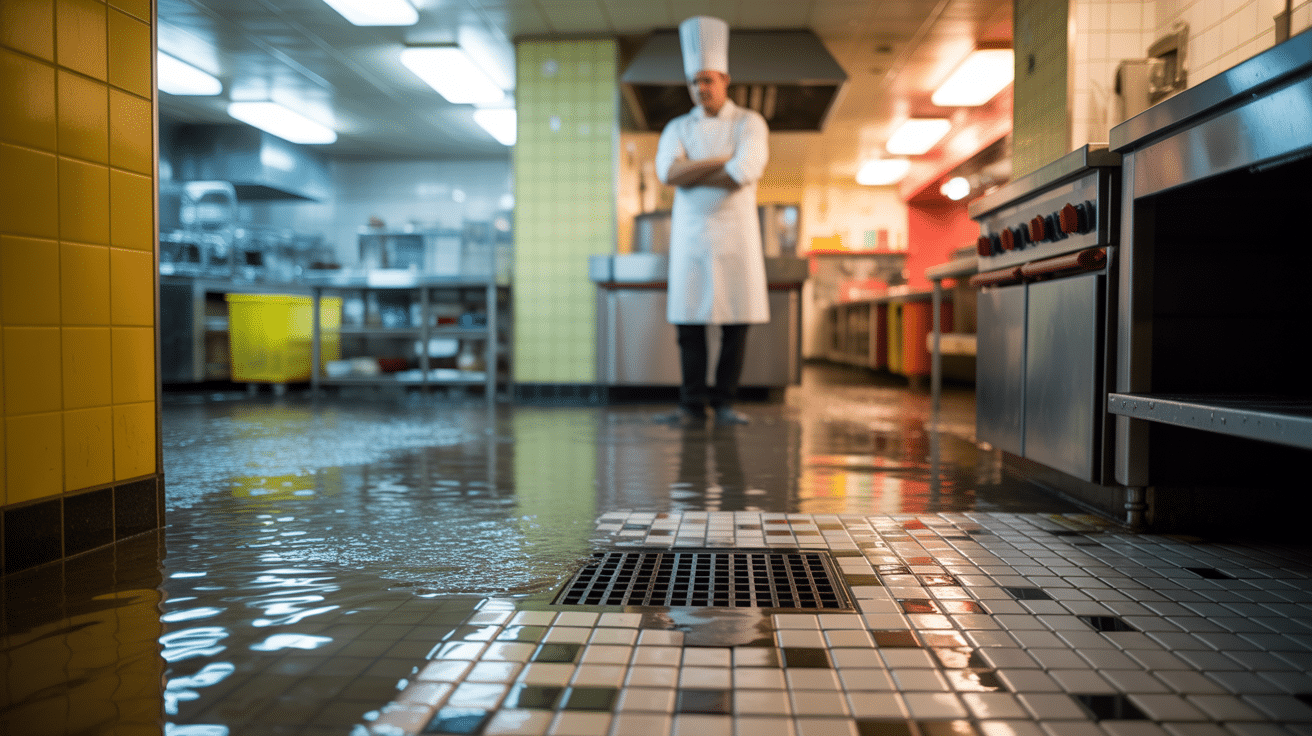
What events are classed as genuine plumbing emergencies in the UK, and why does speed matter so much?
In the UK, a plumbing emergency is any situation where delay risks building damage, loss of vital services, or a direct hazard to occupants’ health or safety. Most people think of a burst pipe or a flooding bathroom, but the legal and insurance context goes a step further: as soon as water, waste, or heating failure poses ongoing harm you can’t fully control, it’s urgent—both for safety and compliance.
Water follows no timetable—if you wait, even a small leak can become an insurance and legal nightmare overnight.
Immediate threats needing urgent attention
- Uncontrolled water leaks: A burst pipe or ruptured fitting spilling water that spreads beyond a single room, especially near electrics or structural elements, is viewed as an emergency by landlords, insurers, and environmental health alike.
- Sewage or foul water rising indoors: Any sign of raw sewage backing up in toilets, baths, or floor drains triggers a rapid-response requirement under housing, health, and landlord/tenant law.
- Total loss of water supply: When every tap runs dry, essential living standards, including basic hygiene and fire safety, are lost, often breaching tenancy and public health codes.
- No hot water or heating during cold periods: Law in England & Wales places vulnerable occupants (children, elderly, disabled) on a “priority” scale—delays here aren’t just inconvenient, they can trigger council intervention and penalties.
- Hazard to safety, hygiene, or structure: Leaks near fuse boxes, stairs, or main exits must be addressed at once, as the risk of injury or fire is immediate.
- Gas leak or carbon monoxide alert: Requires evacuation and a call to 0800 111 999 before any plumber attends—often flagged as a joint “plumbing/heating” crisis under UK guidance.
Compliance references for emergencies
| Emergency | Legal / Code Trigger |
|---|---|
| Burst leading to flood | Landlord & Tenant Act 1985, WRAS, Part G Building Regs |
| Sewage ingress | HHSRS, Environmental Health, Building Regs Part H |
| Loss of supply | Water Industry Act, HHSRS |
| Heating/hot water loss | Fitness for Human Habitation Act, local council policy |
| Blocked WC | Landlord/tenant codes, Environmental Health |
| Gas/CO issue | Gas Safety (Installation & Use) Regulations |
A certified plumber is not just a “fixer”—they’re a vital link to ticking all boxes for compliance, insurance validity, and health protection.
Recognising emergencies: practical examples
- Water pouring through a ceiling, threatening downstairs electrics
- Sewage rising from a ground floor drain into a communal hallway
- All toilets blocked or unusable in a let property
- Elderly tenants reporting no heating during a cold snap
Where isolation fails or the situation threatens health or property, don’t wait—act and document.
How do you decide if a plumbing fault is a 2am emergency or can wait until business hours?
The threshold isn’t “major inconvenience”—it’s current or rising risk to health, safety, and property. If you can safely contain the problem—say, by shutting off water to the room, using a bucket, or isolating a dead circuit—and daily life continues without breaking legal standards, you probably don’t need a midnight callout.
The smartest move is to pause and assess: is it dangerous, widespread, or impossible to isolate? If not, a standard booking is usually fine.
When do you need an emergency plumber right away?
- The leak keeps spreading, threatens wiring, severe property damage, or soaks main living/working zones.
- All toilets blocked or wastewater appearing inside areas where people live or work.
- No water supply at all—this counts as urgent in any let or managed property.
- No heating or hot water in winter, especially with vulnerable residents.
- Signs of gas or carbon monoxide—call emergency gas first.
Problems usually safe to schedule later
- Dripping taps or slow pipe leaks with no impact on wiring or structure.
- Cold radiators when overall heating still works.
- One blocked sink or basin, if others are operating.
- Minor pressure drops with water still available.
- Pipe noises with no visible leak, as long as nothing changes fast.
| Symptom | Emergency? | Immediate Step |
|---|---|---|
| Water through ceiling, electrics nearby | Yes | Mains off, call now |
| Bucket catching drip, electrics safe | No | Monitor, schedule repair |
| All toilets blocked | Yes | Contact plumber, photograph issue |
| One slow sink, all else working | No | Use backup, book in hours |
| Boiler off, elderly in home, mid-winter | Yes | Escalate, get pro help in hours |
Tip: Insurers and councils back up these thresholds—delaying on anything “urgent” can void claims or prompt compliance action.
When does ‘no hot water’ or ‘no heating’ cross into legal emergency territory?
It’s not losing warmth or comfort alone—it’s how those losses impact vulnerable groups, hygiene, or the minimum legal requirements for habitability. Under the Fitness for Human Habitation Act and supplementary housing rules, landlords and social housing managers must restore “essential facilities” at speed, especially during cold periods.
A single missed day of hot water could see your legal liability soar—documented delays cost more than repairs.
Key escalation points
- Vulnerable people: Where the occupants are elderly, very young, or medically at risk, even a short heating/hot water outage is classed as a legal emergency.
- Severe weather: When outside temperatures are forecast below 10°C or extreme alerts are issued, service loss must trigger urgent call-out.
- Commercial hygiene risk: Properties serving food, healthcare, or vulnerable people (hotels, care homes, clinics) must restore supply immediately—hygiene codes mean closures for delay.
- Tenancy and housing policy: Landlords must act “within 24 hours” for priority repairs; many local councils or agents define loss of heat/hot water as an “urgent repair” under tenancy law.
| Risk Group | Time to Respond | Example Rule Reference |
|---|---|---|
| Vulnerable tenant | 24 hours (max) | EPC, Landlord & Tenant Act, local policy |
| Commercial premises | Immediate | Health & Safety, Food Hygiene, Care Standards |
| Owner-occupier | Varies (policy) | Insurance-specific, usually 24–48h |
Delayed repairs can mean rent refunds, legal action, and council involvement. Always get accredited, documented help.
What are a landlord or property manager’s legal and insurance duties if a plumbing emergency arises?
If you let or manage property, UK law and most insurance underwriters give minimal wriggle room: you’re on the clock as soon as a tenant, agent, or occupant reports a major leak, loss of supply, or sanitation risk. “Reasonable efforts” mean records, logs, and evidence—insurance won’t pay out for undocumented delays, and tenants may initiate formal complaints after 24–48 hours.
When the paperwork is weak, compensation and legal costs fill the gap—every hour logged can save thousands.
Landlord & agent must-dos
- Log every event: date/time of report, photo evidence, each repair action, and communications.
- Use only accredited and certified professionals (Gas Safe, WRAS, G3, WaterSafe).
- Respond within legal windows: “24 hours” is typical for urgent repairs and sewage, but sooner if health is at risk.
- Provide updated emergency contacts for tenants; escalate quickly if in-house teams can’t cover.
- After any major event, update insurance logs and keep written confirmations from all parties.
| Emergency Type | Expected Landlord Response |
|---|---|
| Flooding/sewage | 24 hours (sooner if tenants at risk) |
| Heating loss (cold weather) | 24 hours to begin repair |
| Loss of all water | ‘Same day’ in local council schemes |
| Gas/CO alarm | Immediate external escalation |
Real-world example: A landlord delayed fixing basement flooding for four days—council intervened, forced urgent repairs, and insurance refused payout due to “failure to mitigate loss.”
Why are blocked toilets and drain overflows treated as immediate public health crises?
Sanitation breakdowns in UK law aren’t just bad luck—they cross into public and environmental health risk within hours. When “waste backs up” into kitchens, living spaces, or communal areas—or all toilets are blocked—immediate attendance is required under HSE and Environmental Health authorities. For business or multi-occupancy premises, a single incident can close operations and trigger costly site remediation.
In just a few hours, a blocked drain can trigger a business closure or make a home legally uninhabitable.
Triggers for rapid escalation
- Loss of all WC facilities: With no alternative, the property is deemed uninhabitable—council or environmental teams may intervene.
- Sewage indoors: Any sign of foul water in habitable zones is an automatic emergency.
- Flooded external drains reaching threshold: If pooled water nears building exits or ventilations, regulation calls for immediate mitigation.
- Persistent odour/back-up: A sign of system-level blockages warranting professional survey and urgent clearing.
| Event | Urgent Action Required |
|---|---|
| All toilets blocked | <24 hours, “same day” |
| Sewage indoors | Immediate (4–12 hours) |
| Drain flooding near building | Immediate, notify landlord/insurer |
| Odour/system backup persists | 1 day triage, pro-clearing |
For landlords, documentation is vital: Each hour lost can increase claims excess or prompt enforcement notices—ensure logs, photos, and repair certificates are in order.
Who is responsible for emergency repair costs, and how can you prove your emergency claim?
Payment and claim protection hinge on legal status and documentation. Landlords and property managers must cover all “without fault” emergencies in rentals—anything short of deliberate tenant damage is theirs to resolve. Homeowners, local authorities, and businesses usually cover repairs first; insurance reimburses if you can prove prompt reporting and took “all reasonable steps” to limit damage.
When you keep records, you keep control. Paperwork is the first question your insurer or council will ask.
Protecting your emergency claim
- Tenants: Immediately report all issues, keep message and photo logs, follow up if landlords delay. If response breaches legal windows, council can enforce and restore at landlord’s cost.
- Landlords/agents: Record every stage—tenant complaint, pro booking, repair, and invoice. Insurance typically requires “evidence of mitigation”—delays can kill your claim.
- Homeowners/business owners: Document damage, call in certified experts, and notify insurer immediately. DIY repairs without clear cause or evidence often risk coverage.
| Role/Property Occupier | Funding Responsibility | Protecting Your Claim |
|---|---|---|
| Tenant (rental) | Landlord/agent | Escalate, keep all records/photos |
| Landlord/agent | Owner/manager | Log event, accredited engineer proof |
| Homeowner/business | Owner, insurer after | Immediate action, photo/invoice evidence |
Fast-track check:
- Take clear “before” and “after” photos
- Get formal engineer paperwork, job sheets, and digital quotes
- Record all messages and calls, including booking times
When you need claims support or council help, that file is your best route to fair treatment.
What’s the correct step-by-step protocol if an emergency hits right now?
Acting fast with a logical, documented routine saves time, money, and legal grief. Your goal: get control, prove you tried to limit damage, and call in only certified help—all within the response times that keep insurers or councils happy.
Action protocol for any UK plumbing emergency
- Safety first: Isolate water at the main stopcock (if electrical hazards are involved, shut off power at the consumer unit and avoid contact until safe).
- Evidence matters: Snap timestamped photos or videos from start to finish—leaks, damage, and metre readings.
- Contact accredited engineers: For leaks, drains, or floods, contact WRAS/WaterSafe plumbers; for boiler or cylinder issues, ensure G3 or Gas Safe certification.
- Notify relevant parties: For tenants—alert landlord or agent by text/email, copying photos. Owners—notify insurers immediately.
- Log every move: Write down when you spotted the problem, efforts to contain, and all repairs taken. Save all communications.
- Collect full documentation: Get job sheets and fix completion photos from the plumber or engineer, even on a simple callout.
- Escalate persistent failures: If contractors, agents, or councils aren’t moving fast enough, escalate—delaying beyond response windows puts property and claims at risk.
The fastest way to peace of mind is having a plan, acting with speed, and making every move documented.
Plumbers 4U answers calls 24/7, always sending certified, WRAS and WaterSafe plumbers for emergencies—backed up by full engineer documentation and transparent client advice, so you’re never left guessing about compliance, claims, or care.
If you’re worried that a leak, loss of heating, or sanitation failure might become an emergency, act now—Plumbers 4U brings accredited help, full documentation, and legal compliance to every crisis call. Ensure your property remains safe, healthy, and fully protected every day of the year.

